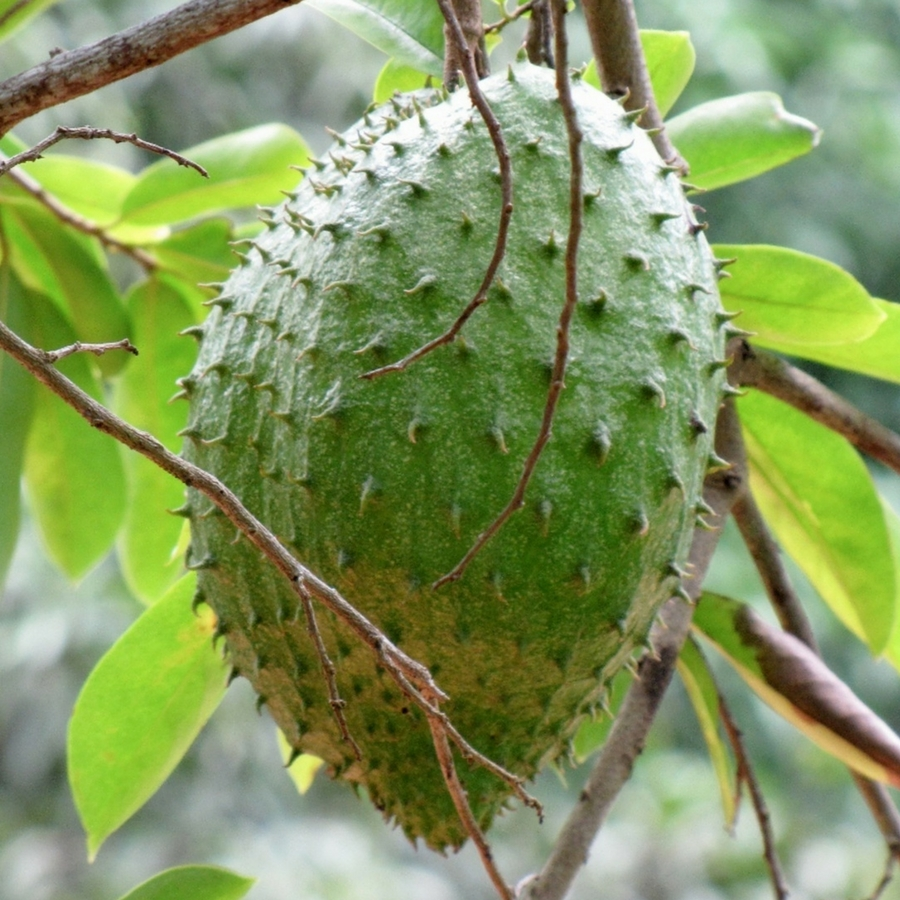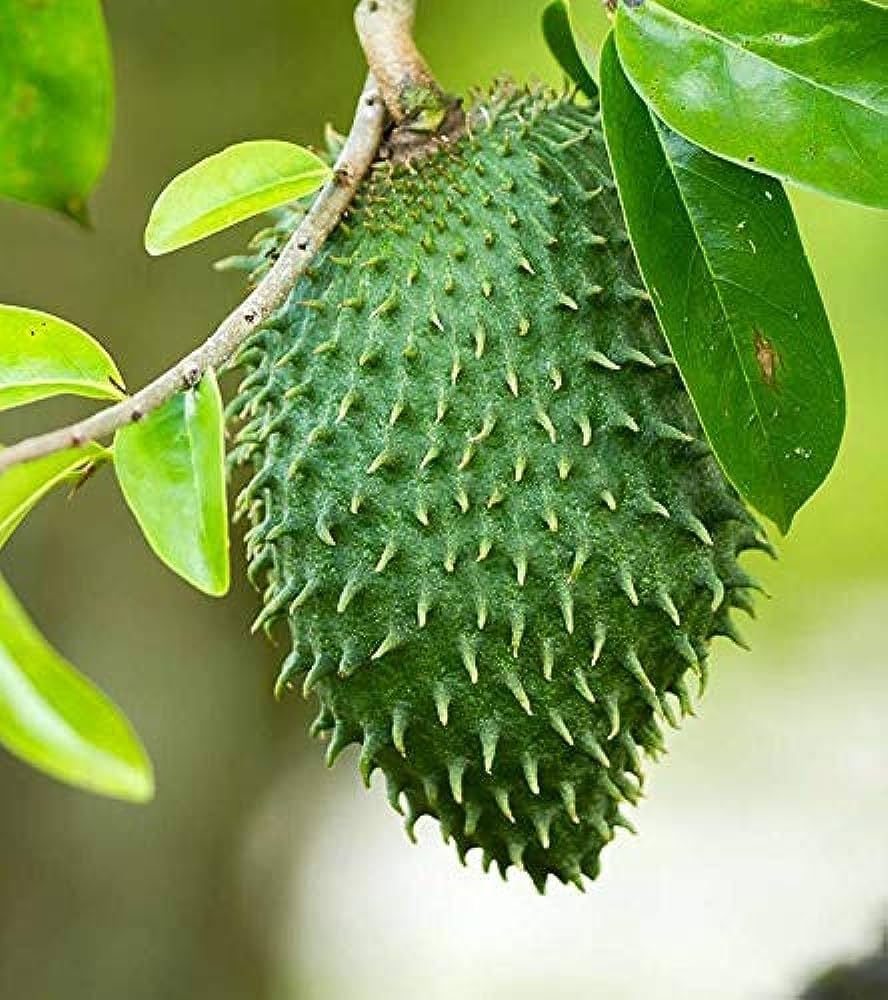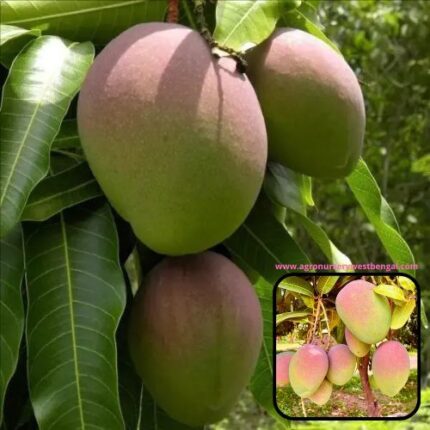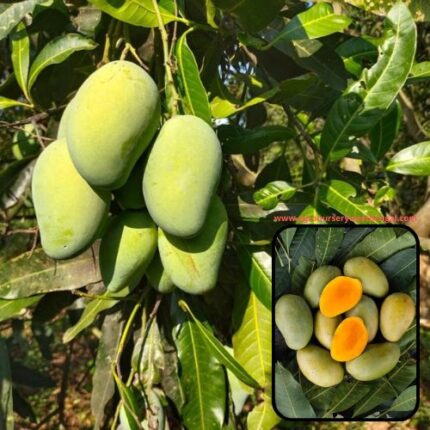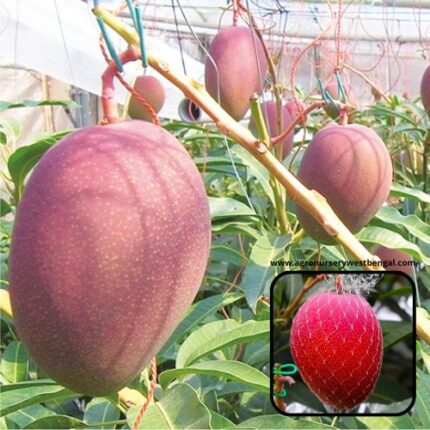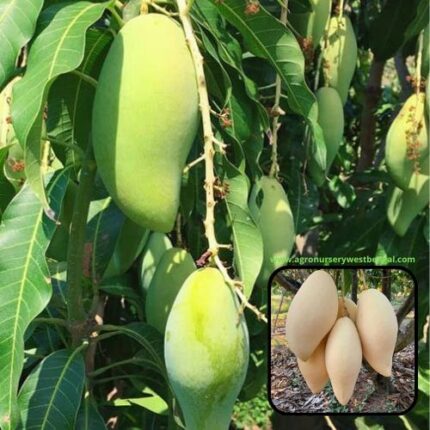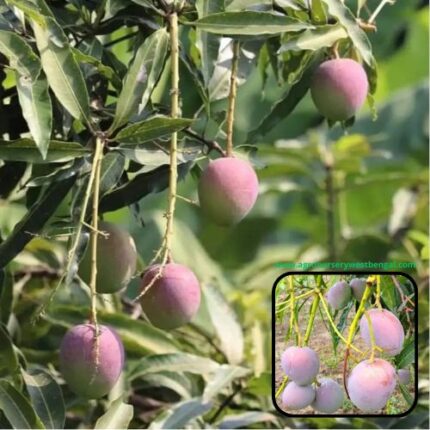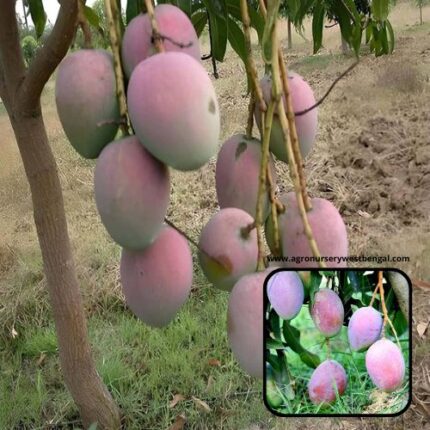
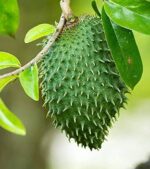

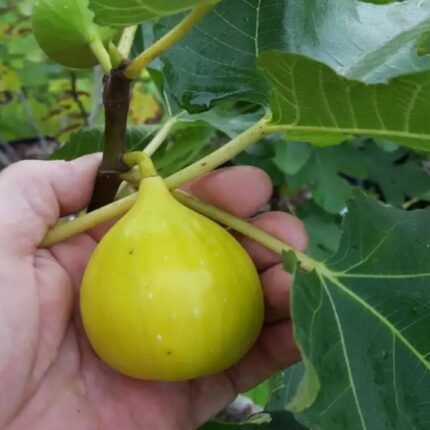
Corsal fruit plants
₹1,199.00 Original price was: ₹1,199.00.₹699.00Current price is: ₹699.00.
The term “Corsal fruit” is less common in English, but it is a regional or local name for the fruit that is widely known as Soursop. You might encounter “Zi Korsol” in Creole-speaking regions like Seychelles, which specifically refers to soursop juice.
Here’s a detailed description of “Corsal fruit” (Soursop):
1. Scientific Name and Family:
- Scientific Name: Annona muricata
- Family: Annonaceae (Custard Apple Family), which also includes fruits like Cherimoya, Sugar Apple (Sweetsop), and Custard Apple.
2. The Plant (Tree):
- Appearance: A small, upright, evergreen tree that typically grows to about 5-10 meters (15-30 feet) tall.
- Leaves: Broad, glossy, dark green, and oval-shaped. They have a distinctive, somewhat pungent aroma when crushed.
- Flowers: Small, yellowish-green, and often appear singly directly on the trunk, branches, or twigs (a phenomenon called cauliflory).
3. The Fruit:
- Appearance:
- Shape: Large and irregularly shaped, often ovoid or heart-shaped, and can be somewhat crooked. It can weigh anywhere from 1 to 7 kg (2 to 15 pounds), making it one of the largest fruits in its family.
- Skin: The most distinctive external feature is its tough, leathery, dark green skin covered with soft, fleshy, spike-like protrusions or prickles. These prickles are not sharp and tend to soften or break off easily as the fruit ripens. The skin often turns a yellowish-green when fully mature.
- Flesh (Pulp): Inside, the fruit contains a creamy white, fibrous, and very juicy pulp. The pulp is typically segmented and surrounds numerous glossy, hard, black, inedible seeds.
- Seeds: The seeds are toxic and should be removed before consumption.
- Taste and Flavor Profile:
- Soursop is renowned for its unique and complex flavor profile. It’s often described as a blend of strawberry and pineapple, with strong notes of citrus (lemon/lime), and an underlying creamy texture reminiscent of banana or coconut.
- It has a delightful sweet and tangy (acidic) balance, which gives it the “sour” part of its name. The sweetness intensifies as it ripens.
- The aroma is also quite distinct and tropical, often likened to pineapple.
- Texture: The flesh is soft, custard-like, somewhat stringy due to fibers, and very juicy when ripe.
4. Ripeness:
- Determining ripeness is crucial for the best flavor. A ripe soursop will:
- Turn from dark green to a yellowish-green or dull green.
- Be soft to the touch, yielding to gentle pressure (like a ripe avocado).
- Emit a strong, sweet, and characteristic aroma.
- Unlike some fruits, soursop does not ripen well if picked too green. It’s best allowed to soften on the tree or picked when mature and allowed to ripen at room temperature for a few days.
5. Culinary Uses:
- Fresh Eating: The most common way to enjoy soursop is to scoop out the white pulp directly from the fruit after cutting it in half. Remember to remove the seeds.
- Juices and Smoothies: It’s widely used to make refreshing juices, smoothies, and milkshakes due to its creamy texture and unique flavor.
- Desserts: Popular in ice creams, sorbets, custards, jellies, and mousses.
- Syrups and Candies: The pulp can be processed into sweet syrups and candies.
6. Nutritional Value and Health Benefits: Soursop is packed with nutrients and has been traditionally used for its medicinal properties in many cultures:
- Rich in Vitamin C: A powerful antioxidant that boosts the immune system.
- Good Source of Dietary Fiber: Aids in digestion and promotes gut health.
- Contains Potassium: Important for maintaining fluid balance and blood pressure.
- Other Nutrients: Provides smaller amounts of B vitamins (thiamine, riboflavin, niacin, folate), magnesium, phosphorus, and iron.
- Antioxidants: Contains various beneficial plant compounds, including acetogenins, flavonoids, and phenolics, which have antioxidant and anti-inflammatory properties.
- Traditional Medicinal Uses: Historically, various parts of the soursop plant (leaves, bark, roots, and fruit) have been used in traditional medicine to treat a wide range of ailments, including infections, inflammation, digestive issues, and even as an anti-parasitic.
Important Note on Research: While soursop is revered in traditional medicine and has shown promising results in in vitro (test-tube) and animal studies for potential anti-cancer and other health benefits, clinical studies in humans are still limited, and more research is needed to confirm these effects. Also, the seeds contain compounds that are considered toxic and should not be consumed.
In summary, “Corsal fruit” is the exotic and flavorful soursop, celebrated for its spiky green exterior, creamy white pulp, and a unique sweet-tangy taste profile that makes it a tro

